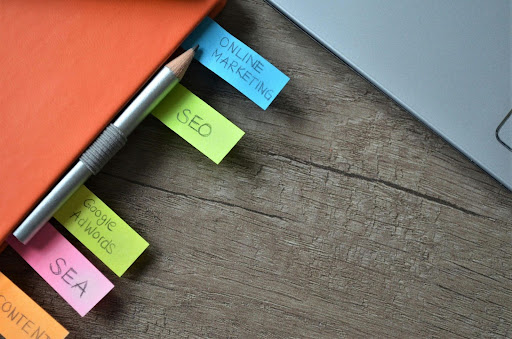
Fix Your Shopify SEO Without Starting From Scratch
If you’re running an e-commerce brand on Shopify, you’ve probably Googled “how to fix Shopify SEO” and seen answers that range from “switch platforms” to “install 15 apps” – not exactly groundbreaking advice.
Let’s get real: Shopify SEO isn’t broken—it just needs proper structure. You don’t need to overhaul your site or spend thousands of dollars on custom development to get your products ranking. You just need to work with what the platform gives you—and make smarter decisions.
Here’s how you can improve your ecommerce search optimization without starting from scratch.

Why SEO on Shopify Is Frustrating—but Fixable
Shopify is one of the easiest e-commerce platforms to launch, but its SEO features aren’t exactly intuitive:
- Product pages often have duplicate content
- Collections and product pages can compete within search
- Out-of-the-box title tags and URLs aren’t always optimized
Here’s the good news: despite some of these frustrating features, the foundational SEO elements are all there—you just need to know where to focus.
Where to Start with Shopify SEO (No Rebuild Required)
The first three levers we recommend pulling for Shopify clients at unFair Advantage are the following:
1. Clean Up Title Tags and Meta Descriptions
Shopify auto-generates title tags—this can result in many issues like tags that are too short, too vague, or duplicate across products.
Fix this by:
- Writing unique, keyword-focused title tags for your top 20% of products
- Including brand, product type, and key differentiators
- Adding meta descriptions that clearly explain what the product is and why it matters
Example:
Instead of “Trail Runner – Gray,” use “Men’s Trail Running Shoes – Lightweight, Waterproof, Free Shipping.”
These changes alone can boost your product page SEO in days.
2. Optimize Product Pages for Keywords That Convert
There’s no reason to guess what your customers are searching for. Using real queries to guide your product descriptions and headlines always leads to the best results.
Tips:
- Use tools like Google Search Console, Ahrefs, or even Shopify’s own reports to identify top-converting keywords
- Add these naturally into H1 tags, product descriptions, and image alt text
- Include related keywords in your product FAQs or product tab copy
This improves relevance and helps Google match your products to buyer intent—without changing your design or theme.

3. Simplify Your URL and Internal Linking Structure
Shopify has a habit of creating deep URL structures like these: yourstore.com/collections/product-type/products/item-name
You can’t always change the base structure—but you can simplify it where possible:
- Avoid unnecessary collections or nested pages
- Use consistent anchor text when linking to products within blogs or other product pages
- Create featured collections or “best-of” pages that link to top SKUs
These tactics support crawlability and spread link equity—two SEO wins.
What to Ask Internally (or Your Dev Partner) Right Now
To assess your current Shopify SEO setup, ask the following questions:
- Are top product pages using custom title tags and meta descriptions?
- Have we added target keywords to the top product descriptions and H1s?
- Are we linking internally to top SKUs from high-traffic pages?
- Do we have multiple pages competing for the same keyword?
If the answers are “no” or “I’m not sure,” you’re likely leaving search traffic—and sales—on the table.

Executive POV: SEO That Doesn’t Require a Rebuild
For marketing leads that are reported up to finance or leadership, here’s how to frame it:
- “We’re improving organic traffic to our most profitable product pages without rebuilding the site.”
- “We’ve prioritized search terms with proven purchase intent.”
- “This approach improves visibility, reduces reliance on paid, and increases organic conversion.”
It’s the kind of SEO conversation that drives buy-in—not pushback.
Final Word: Shopify SEO Can Be Fixed—Without Starting Over
You don’t need to switch platforms or invest in a full redesign. Shopify SEO challenges are real—but they’re solvable with the right focus and planning.
When you clean up product pages, optimize for search intent, and fix internal links you can boost rankings, drive more traffic, and increase sales—all without touching your theme or hiring a dev team.
If you want help identifying your best opportunities and fixing the gaps, that’s exactly what we do at unFair Advantage.
Contact us to learn more about how our talented team can boost your Shopify SEO. We’ll walk your site, identify wins, and help make SEO work more impactful—without starting from scratch.
FAQs
Q: What’s the biggest SEO mistake on Shopify stores?
Relying on auto-generated meta tags and skipping unique content on product pages. These reduce search visibility and increase duplicate content risk.
Q: Can I improve my product page SEO without a developer?
Yes. Most changes—titles, descriptions, and internal links—can be done right in Shopify’s admin with no code required.
Q: What are quick wins for ecommerce search optimization?
Fixing your top product page titles, updating meta descriptions, and adding internal links from blogs or collection pages are great places to start.
Q: Do I need apps to improve Shopify SEO?
Not necessarily. Apps can help with technical enhancements, but strategy and content updates often provide a bigger impact.
Q: How soon can I expect SEO improvements?
If you optimize high-priority pages, you can start seeing ranking and traffic improvements within 2–4 weeks.

